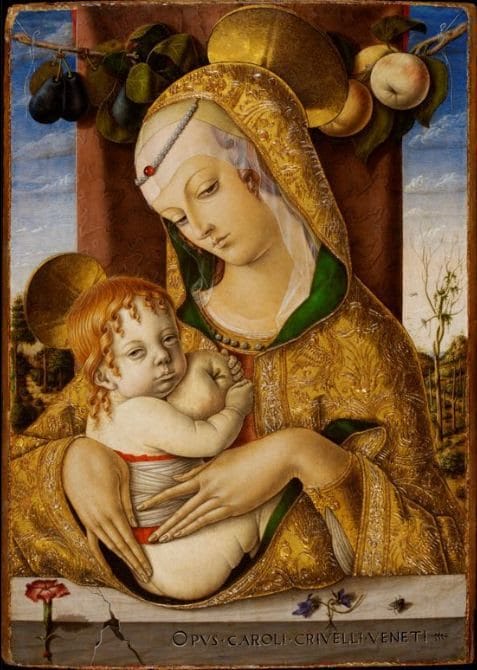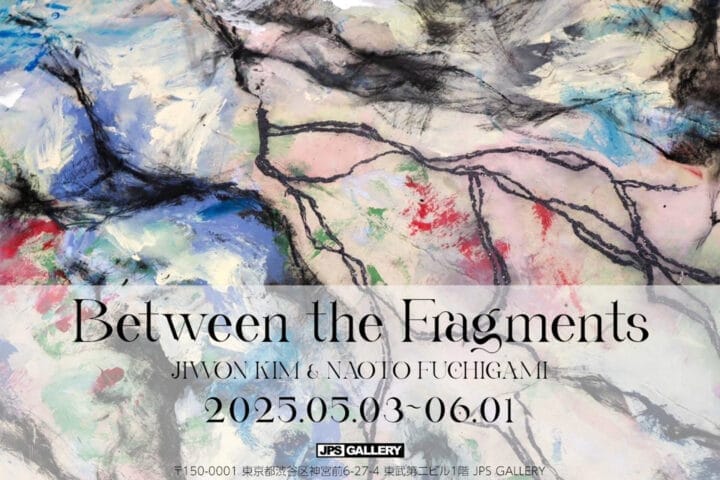Ikon presents the first exhibition in the UK dedicated to the work of Renaissance artist Carlo Crivelli. Shadows on the Sky highlights his experimental use of perspective, trompe l’oeil (optical illusion) and sculptural relief to create illusions of illusionism. Such cleverness was conveyed with consummate craftsmanship and foiled by an extraordinary elegance. Crivelli’s paintings both suggest and undermine his own visual trickery to explore the coexistence of material and spiritual realities.
Organised in partnership with The National Gallery, the exhibition also includes loans from other leading institutions such as the National Trust, the Vatican Pinacoteca, the Victoria & Albert Museum, The Wallace Collection, and the Gemäldegalerie. Through these major loans – some for the first time – we are invited to reconsider Crivelli’s sophisticated understanding of the relationship between art and what it represents. With a sense of irony, found five hundred years later in Magritte’s Ceci n’est pas une pipe (1929), he subtly denies the possibility of one being confused with the other.
Born c.1430, Crivelli worked as a painter in his hometown of Venice until he was brought to trial for committing adultery. After serving a jail sentence, he left Venice permanently and eventually resided in the Italian Marche region of Ascoli Piceno. Here he developed a style that distinguished him as an artist much in demand for religious paintings, often incorporating local subject matter. For example, The Vision of the Blessed Gabriele (c.1489, The National Gallery, London) represents a moment in which a Franciscan monk is confronted by a vision of the Madonna and Child. Set in a meticulously detailed landscape that would have been familiar to Crivelli’s contemporaries, its pictorial space is achieved through the use of aerial perspective and strong receding lines which make up the cornice of a building to the right. This depth created behind the picture plane is counterbalanced by a swag of fruit at the top of the picture, a common trompe l’oeil device found in northern Italian paintings of the time. But here the fruit throws its shadow onto Crivelli’s naturalistic painting of a sky – the picture plane – and thus trompe l’oeil is used paradoxically to untrick the eye.

Crivelli used other trompe l’oeil devices to similarly complicate the reading of his work. Flies, for example, not only occur in his paintings as symbols of sin and evil, but also to assert the materiality of the artwork. His “Jones” Madonna (c. 1480, Victoria and Albert Museum, London) and St Catherine of Alexandria (c. 1491-1494, The National Gallery, London) all feature flies that initially appear to be “in” the pictures but then occur to the viewer as being to scale with the paintings themselves (and incidentally, the viewer). Thus the fly is translated onto the picture – seen “on” the painting – and undermines its illusionism. In this way, Crivelli suggests that a painting is an object only for contemplation – it cannot replace a heavenly vision, such as was granted to the Blessed Gabriele and which, theoretically, will eventually be granted to every one of the faithful.
The coexistence of the different realities that Crivelli represents accounts for the incongruities which exist between various elements in his paintings. This is most obvious in those where heaven meets earth head on, namely crucifixions and annunciations. The Annunciation, with Saint Emidius (1486) in The National Gallery, Crivelli’s pièce de résistance, involves illusionism but its effects are deliberately negated – through a ray of divine light that cuts across a composition otherwise conforming to a rigorous single point perspective. Any cohesive pictorial space thus becomes fractured in order to demonstrate that paintings are not windows onto other worlds, but part of our object world. Crivelli’s paintings therefore operate self-referentially as a form of visual critique. He used perspective symbolically. Its contrived and arbitrary nature was something that Crivelli exposed – along with the whole business of picture making – in order to communicate what was for him, his patrons and his audience, a much more important truth.

Shadows on the Sky was made possible by the inaugural Ampersand Foundation Award, which granted Ikon £150,000 in 2019 to realise a “curatorial dream”. Ikon Director Jonathan Watkins has long championed Crivelli, having published an influential article on him in Art International in 1988. The show is co-curated by Amanda Hilliam, who has recently completed a doctoral thesis on Crivelli and is soon to have a monograph published by Reaktion Books.
To coincide with the exhibition, Ikon will also show two works by pioneering photorealist artist Audrey Flack (b.1931, USA), whose 1981 Arts Magazine article on Crivelli recognised his originality and impact on contemporary art. Calling for a reassessment of his work and a wider overhaul of art history, Flack’s Crivelli-inspired paintings on display in the Tower Room will be: Pollock’s Cans (2016), based on the Pietà (1476, Metropolitan Museum, New York), and a recent painting which combines a portrait of her husband with Madonna Della Candeletta (1488-1490, Pinacoteca di Brera, Milan).
Ikon will additionally run a programme that invites Midlands-based contemporary artists to respond to the exhibition. There will also be a series of public events, including a talk at The National Gallery on 22 February 2022, followed by a major conference in Birmingham on 25 February 2022. For more information, please visit ikon-gallery.org.
A special collection display at The National Gallery will exhibit alongside Shadows on the Sky, focused on the Demidoff Altarpiece (1476) that is too fragile to travel. The exhibition catalogue will be a major publication that features this masterpiece, as well as all works on show at Ikon. Besides Watkins and Hilliam, authors include art historians Anna Degler, Alessandro Delpriori and Stacey Sell.










